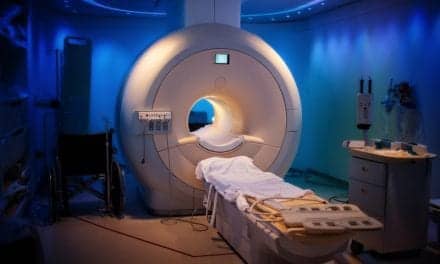Little emphasis is placed on airway clearance despite the prevalence of ventilator-associated pneumonia.
 We take airway clearance for granted until something comes along that impairs it. Airway clearance consists of two separate, but connected, mechanisms: mucociliary clearance and cough clearance. Mucociliary clearance refers to the escalator mechanism in which the ciliated respiratory epithelial cells beat, propelling a thin layer of mucus in the direction of the airway opening. Secretions that reach the central airways are coughed out and either swallowed or expectorated. Primary diseases of mucociliary clearance are cystic fibrosis (CF) and primary ciliary dyskinesia. Secondary diseases of mucociliary clearance include bronchiectasis and chronic obstructive pulmonary disease (COPD).
We take airway clearance for granted until something comes along that impairs it. Airway clearance consists of two separate, but connected, mechanisms: mucociliary clearance and cough clearance. Mucociliary clearance refers to the escalator mechanism in which the ciliated respiratory epithelial cells beat, propelling a thin layer of mucus in the direction of the airway opening. Secretions that reach the central airways are coughed out and either swallowed or expectorated. Primary diseases of mucociliary clearance are cystic fibrosis (CF) and primary ciliary dyskinesia. Secondary diseases of mucociliary clearance include bronchiectasis and chronic obstructive pulmonary disease (COPD).
Coughing has four phases: 1) inhaling to total lung capacity; 2) closing the glottis; 3) increasing intra-abdominal pressure by contracting the abdominal muscles, thereby narrowing the central airways; 4) and opening the glottis, allowing for a rush of air at high velocity, shearing secretions from the airway wall and propelling them centrally.
Impaired Airway Clearance Common
Patients in the intensive care setting very often have impaired airway clearance. Being intubated prevents the patient from closing the glottis, which is necessary for effective coughing. Care of the intubated patient includes direct suction applied to the endotracheal tube. This technique, which clears a small portion of the airway, is ineffective for clearing secretions in the peripheral airways, and the patient is left dependent upon mucociliary clearance rather than cough clearance. Deep insufflation with a self-inflating ventilation bag can help, especially if this is accompanied by chest physiotherapy, but it does not recreate a cough.
Ventilator-associated pneumonia is an exceedingly common problem in intensive care units (ICUs), occurring in as many as 27% of patients.1 The reasons for this are complex, with aspiration of upper-airway secretions and gastric contents reported to contribute significantly.2,3 Despite the many reports and reviews on ventilator-associated pneumonia, little emphasis is placed on airway clearance.
Patients requiring intubation and positive-pressure ventilation fall into two main categories: those with acute parenchymal lung disease, such as adult respiratory distress syndrome (hypoxic respiratory failure), and those with neuromuscular weakness, such as spinal-cord injury (hypercarbic ventilatory failure). Both categories of patients can benefit from attention to airway clearance. Those in the second category are at particular risk of developing atelectasis and pneumonia, since they tend to have poor cough clearance at baseline.
A new emphasis on early extubation, coupled with the use of noninvasive ventilatory support, has been demonstrated4 to decrease the incidence of ventilator-associated pneumonia. This area is the subject of a great deal of study, yet the role of impaired airway clearance in the intubated patient has not been adequately studied.
Open versus closed suction systems have been studied5,6 in patients receiving mechanical ventilation, with the idea that a closed system would reduce contamination of the lower airways (and, thereby, ventilator-associated pneumonia). These systems have been demonstrated5,6 to decrease incidence of ventilator-associated pneumonia, as well as bacterial cross-contamination between the gastric and respiratory tracts.
Techniques for Physiotherapy Vary
Traditional techniques for chest physiotherapy can be applied to the intubated patient. These include positioning (for postural drainage and to improve ventilation-perfusion matching), percussion, vibration, suction, and manual hyperinflation (reviewed by Stiller7). In the technique of manual hyperinflation,8 a rebreathing or self-inflating circuit is used to insufflate the chest slowly to a tidal volume at least 50% greater than that provided by the ventilator, followed by an inspiratory pause and then chest-wall vibrations during the expiratory phase. Contraindications include severe bronchospasm, pneumothorax, positive end-expiratory pressure of more than 7.5 cm H2O, and increased intracranial pressure. Despite widespread acceptance, there is no published evidence that demonstrates a benefit or improved airway clearance due to percussion and vibration in the intubated patient.7 Patients with acute lobar atelectasis do benefit from chest physiotherapy, however, and it remains the treatment of choice in this situation.9,10
Intermittent positive pressure breathing (IPPB) has long been used in the intensive care setting in nonintubated patients.11 Although widely accepted, few studies have validated its efficacy.12,13 It is used primarily to improve lung expansion and to treat atelectasis. It can be used to deliver aerosolized medications in patients unable to take deep breaths. It is described in a Respiratory Care Clinical Practice Guideline11 as indicated for patients who have impaired airway clearance, and for delivery of aerosolized medications to patients with neuromuscular weakness who are incapable of inhaling deeply. IPPB should be used with caution in patients with severe, uncontrolled bronchospasm or severe airway obstruction secondary to COPD exacerbation (stable asthma and COPD, however, are two additional indications). Contraindications include untreated tension pneumothorax, increased intracranial pressure, recent esophageal surgery, and hemodynamic instability.
New technologies have recently been employed in the ICU to improve airway clearance. Mechanical insufflation-exsufflation (MI-E) is gaining acceptance in ICUs for patients using ventilators. The advantage of MI-E is that it applies negative pressure across the entire airway (both central and peripheral), in contrast to direct tracheal suction, which applies negative pressure to a small, localized area. MI-E is preferred to direct tracheal suction by tracheostomized patients.14 This therapy is perhaps the most physiologic recreation of a natural cough. MI-E has been used to aid in the weaning from mechanical ventilation of patients with neuromuscular disease.15 It appears to be more effective than direct tracheal suction for airway clearance in mechanically ventilated patients with amyotrophic lateral sclerosis.16
Intrapulmonary percussive ventilation (IPV) uses a device that mobilizes secretions by rapidly oscillating a column of air via mouthpiece. Aerosolized medications can be delivered simultaneously. Birnkrant et al17 demonstrated resolution of atelectasis with the use of IPV in a case series. They found that the IPV treatment resulted in clinical and radiographic improvement in three of four patients; one patient experienced a third-degree atrioventricular block and hypoxemia. In a larger case series, Deakins and Chatburn18 demonstrated that IPV could be used safely in pediatric patients and was efficacious in treating atelectasis.
In summary, the RT needs to be mindful of the phenomenon of impaired airway clearance in the intensive care patient. Those patients who have impaired mucociliary clearance (for example, COPD and CF patients) are at particular risk, as are those who have neuromuscular weakness. For these groups, careful monitoring and aggressive use of both accepted and newer techniques should be considered.
| One pulmonologist’s personal experience with airway clearance I recently found myself in the unenviable position of being unable to cough or swallow after spine surgery. An accident involving a bicycle and a pickup truck culminated in a broken cervical spine for the bicyclist (me). I learned, firsthand, about the patient experience, as well as something about airway clearance. My talented surgeon performed an anterior spinal fusion that corrected my cervical fracture, but left me with a very sore throat and a very sore hip from the bone harvest site on my anterior iliac crest. Soon after recovering from anesthesia, I could sense a need to cough, but I was prevented from coughing by pain. I could not take a deep breath. I requested a treatment that I use for my muscular dystrophy patients: a mechanical insufflation-exsufflation (MI-E) device. I experienced immediate relief with this device, which allowed me to take a much deeper breath than I would have been able to take on my own. It also pulled the air back out at a much faster flow rate than I could have generated. Within a few breaths, I could feel the pooled secretions leaving my lungs; I then expectorated the secretions. My lungs cleared and my oxyhemoglobin saturation rose. After a few days, I was able to clear secretions on my own, but this device may well have prevented atelectasis and even pneumonia (which would not have done at all for a pulmonologist). —Jonathan D. Finder, MD |
Jonathan D. Finder, MD, is associate professor of pediatrics, University of Pittsburgh School of Medicine.
References
1. Richards MJ, Edwards JR, Culver DH, Gaynes RP. Nosocomial infections in medical intensive care units in the United States. National Nosocomial Infections Surveillance System. Crit Care Med. 1999;27(5):887-892.
2. Kollef MH. Prevention of hospital-associated pneumonia and ventilator-associated pneumonia. Crit Care Med. 2004;32(6):1396-1405.
3. Leroy O, Soubrier S. Hospital-acquired pneumonia: risk factors, clinical features, management, and antibiotic resistance. Curr Opin Pulm Med. 2004;10(3):171-175.
4. Antonelli M, Conti G, Rocco M, et al. A comparison of noninvasive positive-pressure ventilation and conventional mechanical ventilation in patients with acute respiratory failure. N Engl J Med. 1998;339(7):429-435.
5. Combes P, Fauvage B, Oleyer C. Nosocomial pneumonia in mechanically ventilated patients, a prospective randomised evaluation of the Stericath closed suctioning system. Intensive Care Med. 2000;26(7):878-878.
6. Rabitsch W, Kostler WJ, Fiebiger W, et al. Closed suctioning system reduces cross-contamination between bronchial system and gastric juices. Anesth Analg. 2004;99(3):886-892.
7. Stiller K. Physiotherapy in intensive care: towards an evidence-based practice. Chest. 2000;118(6):1801-1813.
8. Denehy L. The use of manual hyperinflation in airway clearance. Eur Respir J. 1999;14:958-965.
9. Stiller K, Jenkins S, Grant R, et al. Acute lobar atelectasis: a comparison of five physiotherapy regimens. Physiotherapy Theory and Practice. 1996;12:197-209.
10. Judson MA, Sahn SA. Mobilization of secretions in ICU patients. Respir Care. 1994;39:213-226.
11. Sorenson HM, Shelledy DC, AARC. AARC clinical practice guideline. Intermittent positive pressure breathing—2003 revision & update. Respir Care. 2003;48(5):540-6.
12. Overend TJ, Anderson CM, Lucy SD, Bhatia C, Jonsson BI, Timmermans C. The effect of incentive spirometry on postoperative pulmonary complications: a systematic review. Chest. 2001;120(3):971-8.
13. Pasquina P, Tramer MR, Walder B. Prophylactic respiratory physiotherapy after cardiac surgery: systematic review. BMJ. 2003;327(7428):1379.
14. Garstang SV, Kirshblum SC, Wood KE. Patient preference for in-exsufflation for secretion management with spinal cord injury. J Spinal Cord Med. 2000;23(2):80-85.
15. Bach JR, Goncalves M. Ventilator weaning by lung expansion and decannulation. Am J Phys Med Rehabil. 2004;83(7):560-568.
16. Sancho J, Servera E, Vergara P, Marin J. Mechanical insufflation-exsufflation vs. tracheal suctioning via tracheostomy tubes for patients with amyotrophic lateral sclerosis: a pilot study. Am J Phys Med Rehabil. 2003;82(10):750-753.
17. Birnkrant DJ, Pope JF, Lewarski J, Stegmaier J, Besunder JB. Persistent pulmonary consolidation treated with intrapulmonary percussive ventilation: a preliminary report. Pediatr Pulmonol. 1996;21(14):246-249.
18. Deakins K, Chatburn RL. A comparison of intrapulmonary percussive ventilation and conventional chest physiotherapy for the treatment of atelectasis in the pediatric patient. Respir Care. 2002:47(10):1162-1167.









